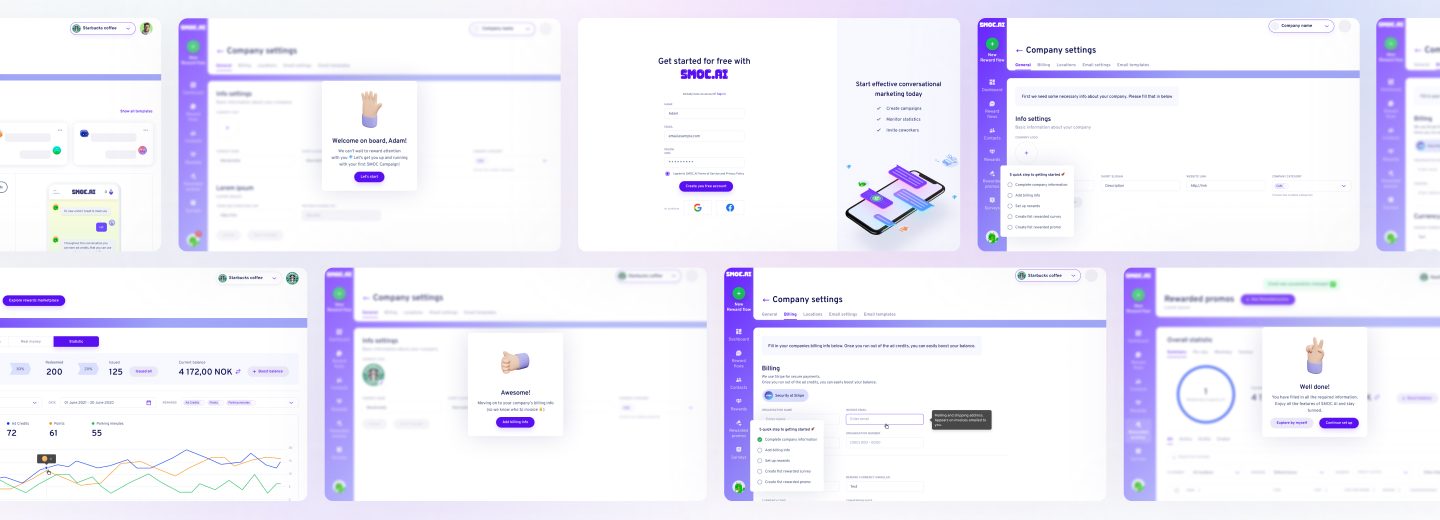Launching a product without validating its core idea in today’s digital environment can be a costly mistake. MVP (Minimum Viable Product) software development is still essential today. Building an MVP serves as a necessary and strategic approach because evolving technologies, user expectations, and tighter competition are important for startups and enterprises.
Your understanding of how MVP development functions in 2025 will help founders with innovative ideas or product managers save time while minimizing risks and delivering superior results. This article analyzes MVP meaning in software, current MVP strategies, relevant tools, and explains how modern teams accelerate product deployment at high standards.
what’s in the article
- What Is MVP in Software Development?
- MVP Software Development Process
- Benefits of MVP Software Development
- MVP Development Best Practices in 2025
- Choosing the Right MVP Software Development Company
What Is MVP in Software Development?
MVP meaning in software development is a basic software version that contains fundamental elements required to handle specific issues and main user requirements. The goal consists of quick deployment, feedback gathering for product improvements through real-world usage while maintaining low time and resource investment.
The MVP development process in 2025 requires more than fast MVP development. The purpose of an MVP system involves testing ideas to match user needs through data-based choices before initial project development. This strategic method enables teams to prevent developing useless features while they concentrate on essential elements that matter to their target customers.
MVP Meaning in Software
In MVP software meaning, MVP stands for Minimum Viable Product. It serves as the first operational product version which enables companies to evaluate their concept with genuine end-users. The goal behind MVP development is to discover how the solution functions and then determine both successful and unsuccessful elements to determine additional action steps.
The core aspect of an MVP enables companies to decrease their risks while accelerating their market entry. This strategic method allows people to transition their ideas into impactful results throughout technology-dominated markets.

Looking to Build an MVP without worries about strategy planning?
EVNE Developers is a dedicated software development team with a product mindset.
We’ll be happy to help you turn your idea into life and successfully monetize it.
MVP Software Development Process
So, know you are aware of what is MVP in software development, but the creation of successful MVPs for 2025 goes beyond coding since it combines user understanding, agile development approaches, and strategic prioritization. The software development MVP procedure takes fundamental concepts and turns them into operational products that bring immediate value. The development of an MVP follows several vital stages starting with idea validation that leads to the final product launch.
Idea Validation
Every great product starts with an idea — but not every idea is worth building. The initial step and most fundamental requirement is validating the concept. The research phase focuses on studying the target market to understand user needs, competitive analysis, and verify market demand. The assessment of assumptions begins through surveys, interviews, and basic landing pages which help developers avoid wasted development efforts on untested ideas.
Feature Prioritization
After validating the idea the next priority becomes determining which essential features must be included during the initial product launch. The most crucial elements that address the core problem should remain the foundation of the product during this simplification process. The MoSCoW method and user story mapping provides product teams with effective tools for proper prioritization that prevents feature bloat.
Prototyping
A prototype enables the concept to reach life-like manifestation before full development begins. The prototype can take the form of wireframes, clickable interfaces, and visual storyboards. Prototyping acts as a vital tool to present user paths, enhance user interface quality, and receive preliminary feedback from stakeholders without needing extensive development funding.
MVP Development Phase
Now it’s time to build. During the development phase developers build the real MVP while implementing agile development methods to guarantee flexibility and speed. Creating a dependable product with fundamental capabilities stands as the main objective during this phase. Development success relies on active collaboration between product owners, designers and developers to preserve focus and progress.
Testing and QA
A reliable performance remains essential for every minimal product. Multiple tests including functional testing, usability testing, and bug fixing take place to thoroughly evaluate the MVP at this stage. The team ensures that the product functions properly to give users an excellent experience and fulfill the initial project requirements before launching it.
Launch
After completing testing the MVP is prepared for its official release. The launch requires a strategic approach rather than going big. In the first phase of the product users receive feedback that forms the basis for product enhancements in later updates. Businesses that release their product early and learn through quick feedback will make informed choices and develop their products with certainty.

Proving the Concept for FinTech Startup with a Smart Algorithm for Detecting Subscriptions

Scaling from Prototype into a User-Friendly and Conversational Marketing Platform
Benefits of MVP Software Development
User feedback, speed, flexibility, and rapid digital evolution create the keys to making successful products. MVP for software development establishes a streamlined process that connects ideas to market success by delivering these essential advantages. Organizations that launch products with minimum essential features achieve time and cost efficiency. Let’s explore the main benefits that make MVP development a smart choice in 2025.
Faster Time-to-Market
Time becomes essential because innovation advances rapidly while businesses face intense competition. Through software MVP development teams achieve the quick deployment of products to user hands. Businesses can achieve rapid development while entering markets quickly by limiting their focus to essential product capabilities. This early launch also opens the door for real-time feedback, helping shape further development phases more efficiently.
Lower Development Сosts
Creating an entire product before the first day produces high development expenses with significant risk factors. The initial expenses decrease through MVP development because the solution concentrates on essential core features. The lean strategy reduces expenses and lets businesses optimize their resource distribution which is crucial for cost-conscious ventures and organizations pursuing funding.
Reduced Business Risk
Developing an entire product before market testing may result in business failure despite initial apparent product quality. MVP development restores business safety through early real-world testing of product ideas. The product development process becomes more effective when businesses collect user input while monitoring performance metrics to determine if the solution addresses genuine customer needs. Any necessary modifications need to be done before building the complete product.
Easier Pivoting
The market continues to transform while user demands shift and first assumptions about the product sometimes miss the mark. The process of market adjustment becomes more efficient and affordable due to MVP implementation. The early development phase of the product enables teams to implement strategic modifications which include adjustments to features, audience targets, and complete concept reevaluations without substantial cost or time investment.

Need Checking What Your Product Market is Able to Offer?
EVNE Developers is a dedicated software development team with a product mindset.
We’ll be happy to help you turn your idea into life and successfully monetize it.
MVP Development Best Practices in 2025
In 2025 the successful creation of MVPs goes beyond rapid coding efforts because the field of product development continues to transform constantly. Successful MVP development needs strategic thinking and user-centered design supported by market understanding. Following MVP best practices enables both startup founders and product teams from expanding companies to avoid common mistakes and set your product up for long-term success.
Pick Unique Industry
In saturated markets, it’s harder than ever to stand out. The year 2025 provides an effective approach for businesses to target emerging or specialized market sectors that need innovation approaches. The emerging opportunities in the market exist in sectors such as sustainability technology, elder care solutions, rural logistics, and artificial intelligence applications for education. Your Minimum Viable Product benefits from industry-specific focus which allows it to connect better with target users.
Choose the Right Tech Stack
Your choice of technology for the minimum viable product dictates how fast it develops and how scalable it becomes while affecting its long-term maintenance requirements. The year 2025 will favor the development of lightweight flexible cloud-native solutions when building MVPs. Your MVP development speed and scalability benefit from using serverless architecture combined with no-code/low-code platforms and modular backend MVP software development services. Your selection of technologies for building your MVP should align with your business goals that enable rapid development without burdening you with technical maintenance costs.
Focus on the Core Problem
The leading mistake made in MVP development starts with trying to accomplish multiple things from the beginning. A powerful MVP depends on resolving one particular problem better than any alternative solution. Each design aspect, workflow, and feature must support the main purpose of the goal. Your MVP will create immediate value for users while helping you understand solution viability when you focus on addressing one distinct pain point.
Build for feedback, not perfection
Perfection is the enemy of progress — especially in MVP development. The successful teams of 2025 aim to deploy their products rapidly followed by fast learning and fast development cycles. Construct your product to an operational state that lets users offer genuine feedback rather than devoting effort to perfect each aspect. Real product insights emerge from this feedback loop which transforms your MVP into a value-based solution throughout time.
Choosing the Right MVP Software Development Company
MVP development success depends heavily on selecting the appropriate partner who will influence the future of your product. 2025 requires collaboration with a development team capable of uniting technical knowledge with business expertise.
At EVNE Developers MVP software development agency, we assist startups and businesses to verify their concepts while developing essential solutions which rapidly reach market availability. We develop MVPs that remain lean with functional capabilities to deliver actual value for users while establishing conditions for expansion. Our partnership with clients requires us to select important features and suitable technologies before we make changes according to genuine user feedback instead of guesses.
Selecting MVP software development company requires more than writing code since it demands a partnership in achieving mutual objectives and maintaining clear communication. We provide complete developmental support for your journey through our functional step-by-step development process which serves both new concepts and established ones.
Prototypes function as visual or interactive designs to test ideas while MVPs represent operational products with essential features that collect real user feedback.
A typical MVP development project in 2025 requires between $15,000 and $50,000 based on the number of features, team location, and system complexity.
The absence of technical expertise does not prevent founders from developing MVPs through two different approaches: either by working with development teams or using no-code/low-code platforms to build basic product versions.

About author
Roman Bondarenko is the CEO of EVNE Developers. He is an expert in software development and technological entrepreneurship and has 10+years of experience in digital transformation consulting in Healthcare, FinTech, Supply Chain and Logistics.
Author | CEO EVNE Developers


















